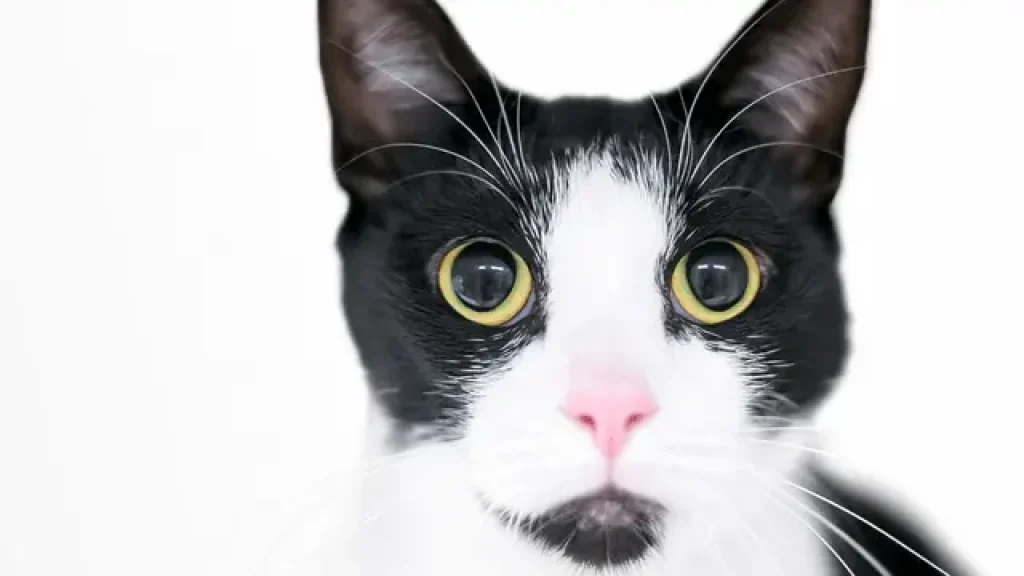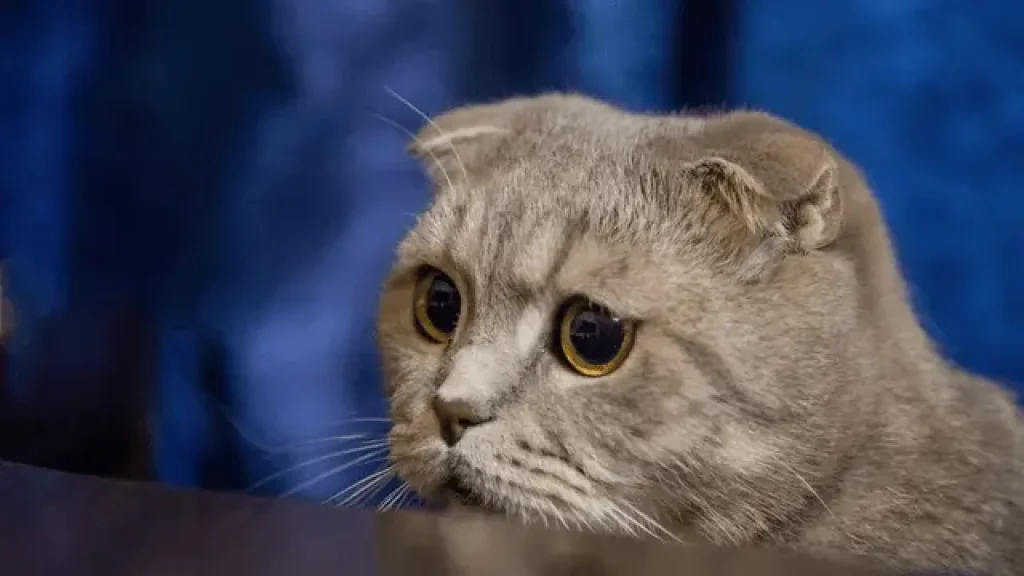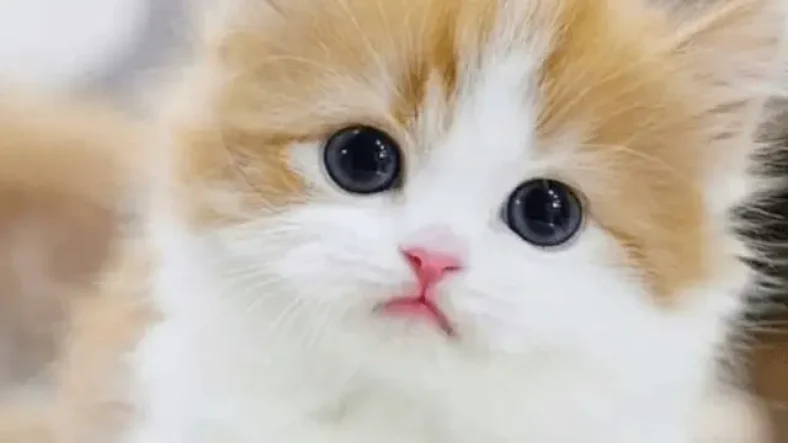Have you ever noticed your cat’s eyes looking unusually large? If so, it’s likely that their pupils are constantly dilated.
While this can be concerning for cat owners, there are typically harmless explanations behind why cats have dilated eyes.
We’ll explore the common reasons why cats may have permanently enlarged pupils and how to treat them.
While some cases of dilation might just be normal feline behavior, others could signal an underlying medical issue.
Therefore, if you’re worried about your cat’s eyes being consistently widened, it is best to consult with a veterinarian right away. Once the root cause has been identified, they will provide advice on how to proceed with treatment or management.
In addition to exploring potential causes of permanent pupil dilation in cats, we’ll also go over signs and symptoms to watch out for, as well as prevention tips that every owner should know.
So let’s dive into what pet parents need to know about cats having always-dilated eyes!
Contents
Definition Of Pupillary Dilation
Pupillary dilation, otherwise known as dilated pupils, is when the pupil of one’s eye enlarges beyond its normal size.
This can be a sign of several different problems with one’s eyesight and should not be taken lightly.
The eyes are an important part of our bodies, so any change in their behavior could indicate something more serious than just pupillary dilation.
When it comes to cats’ eyes specifically, pupillary dilation can occur for many reasons. In some cases, it might simply mean that your cat is excited or surprised by something and is trying to take in more of the environment around them.
However, if this persists over time, then it could signal a few possible medical issues related to the eye, such as glaucoma or even hemorrhage within the retina itself.
It’s always best to get your furry friend checked out at the vet if you notice any changes in their eye shape or coloration – no matter how small they may seem.
With a proper diagnosis and treatment plan, most eye-related issues can often be resolved without difficulty.
Moving on, there are numerous common causes of dilated pupils in cats, which we will now explore further…
Common Causes Of Dilated Pupils In Cats

It’s quite common for cats to have dilated pupils, but there are a few causes that should be looked into if it persists.
Soaring in with the rhetorical device of alliteration, let us take a look at some common culprits behind pupil dilation in felines.
Feline glaucoma is one possible cause of dilated pupils in cats. This occurs when pressure builds up within the eye due to an abnormal increase of fluid – this can lead to vision damage and severe pain for your cat.
It’s important to schedule regular vet checkups so that any changes in their eyesight can be monitored and addressed early on.
Cat anemia may also contribute to dilated pupils as well as other symptoms such as pale gums or lethargy.
Anemia is caused by a lack of red blood cells which results in oxygen deprivation throughout the body, therefore, making it difficult for them to keep their eyes open like they normally would. If you suspect your cat has anemia, then visit a veterinarian immediately!
In addition, feline uveitis or viral conjunctivitis can both result in dilated pupils through inflammation of the eye tissues and infection, respectively.
Furthermore, trauma or injury inflicted upon your cat could affect the way their pupils react too – if they’ve been hit or experienced extreme shock or fright, then their eyes might not respond correctly afterward either.
Therefore, it always pays off to pay attention whenever something looks out of sorts with your kitty’s gaze – get regularly checked up at vets, watch for signs of illness or injury, and make sure they’re getting enough rest every day!
That way, you’ll be able to spot anything unusual before it becomes problematic and ensure your beloved pet stays safe from harm.
In order to better understand what these conditions mean for our furry friends next, we’ll discuss various signs and symptoms to look for…
Signs And Symptoms To Look For
It’s important to know what signs and symptoms indicate a possible eye problem in your cat. One of the most common signs is when the pupils, or black centers of their eyes, are dilated all the time.
This can be caused by several feline eye problems, such as an injury, internal pressure on the eye due to glaucoma, inflammation inside the eyeball, or even a neurological disorder.
If you notice that one pupil is larger than the other or they appear in unequal sizes, this could mean there’s something wrong with your cat’s vision.
Other things to look out for are any changes in coloration around the eyes or if there’s any discharge from them.
It might also be beneficial to compare photos taken recently with ones taken in past years so you can spot more subtle differences between them.
Any kind of change should prompt further investigation into whether it’s potentially related to an underlying medical issue since cats don’t develop these kinds of issues on their own without an underlying cause.
If you’ve noticed any abnormal behavior associated with your cat’s eyes, then it’s best to take them immediately to see a veterinarian who specializes in treating animals’ eyesight and vision-related conditions because early detection and treatment are key.
Diagnostic Tests For Eye Problems

It’s like an expedition into the unknown. When your cat’s eyes are always dilated, it can be a bit of a mystery trying to discover what’s going on.
Fortunately, there are some tests you can do that will help uncover why this is happening and how best to address it:
- A feline eye exam allows your vet to check for any abnormalities in their vision or overall health of the eyes.
- The vet may also perform a dilated pupil test to look for obstructions or other conditions that could cause the pupils to stay large.
- An eye pressure test measures the amount of fluid inside the eyes and helps determine if high intraocular pressure is causing the dilation.
These diagnostic tests give us valuable insight into our cats’ ocular health so we can provide them with proper care and treatment when needed.
By getting these examinations done regularly, we can ensure our furry friends maintain good eye health throughout their lives.
With all this information at hand, we’re better equipped when making decisions about treatments for our cat’s dilated eyes.
Treatments For Cat’s Dilated Eyes
When our cat’s eyes are always dilated, it’s important to understand the condition and what treatments may be available.
Cat eye treatments can range from medications to certain lifestyle changes that help reduce pupil dilation.
Cat eye dilators such as atropine have been used in the past, which help prevent further pupil enlargement, but this should only be done with advice from a medical professional.
It is also possible to use other cat eyes medications, such as anticholinergics or beta-blockers, depending on the underlying cause of your cat’s dilated pupils.
In addition, there are various lifestyle changes you can make to try and alleviate any discomfort caused by constantly enlarged pupils.
For example, providing more comfortable sleeping areas for your cat, avoiding bright lights when possible, reducing exposure to loud noises, and making sure they get enough exercise throughout the day all go a long way in helping keep their eyes healthy.
By understanding the treatment options and taking steps to ensure our cats stay healthy, we can help them avoid future eye problems.
Prevention Of Cat Eye Problems
When it comes to preventing eye problems in cats, prevention is key. As the old saying goes, an ounce of prevention is worth a pound of cure.
Taking some simple steps can help keep your cat’s eyes healthy and free from issues like dilated pupils or other diseases.
First off, maintaining good nutrition is essential for all aspects of health, including eye health. Feeding your cat a balanced diet full of vitamins and minerals will ensure their eyes stay strong and resilient against disease.
You should also look into feline-specific supplements that may contain additional nutrients needed for optimal eye health, such as lutein and omega-3 fatty acids.
Additionally, regular checkups with your veterinarian are important so any potential issues can be caught early on before they become serious problems.
It’s also important to prevent physical injury to your cat’s eyes which could occur due to sharp objects or roughhousing. Keep any dangerous items away from them as much as possible and supervise playtime if you have multiple pets in the house.
In addition, proper hygiene practices are necessary when it comes to keeping your cat’s eyes clean and healthy – make sure you’re regularly wiping away debris or discharge around their eyes with warm water or saline solution (not rubbing alcohol!).
Finally, don’t forget about exercise levels – provide plenty of opportunities for physical activity every day since this will help maintain muscle tone around the eyelids, which helps prevent drooping over time.
By following these tips, you can give yourself peace of mind knowing that you’ve done everything within your power to protect the vision of your beloved companion!
FAQs
Q: Are dilated pupils in cats always a cause for concern?
A: Not necessarily. Dilated pupils can be a normal part of a cat’s response to excitement or arousal. However, if your cat’s pupils are constantly dilated, it could be a sign of an underlying medical condition, and it’s best to consult with a veterinarian.
Q: Can cat eye problems be prevented?
A: While some eye problems in cats may be hereditary or unavoidable, there are steps you can take to help prevent them. Regular checkups with a veterinarian, proper nutrition, hygiene practices, and preventing physical injury can all contribute to maintaining good eye health in cats.
Q: Can cat eye problems be cured?
A: The treatment and prognosis for cat eye problems depend on the underlying cause. Some issues, such as infections or injuries, can be resolved with proper treatment. However, other conditions, such as glaucoma or uveitis, may require ongoing management to prevent vision loss.
Q: How often should I take my cat to the vet for an eye checkup?
A: It’s recommended to take your cat for regular checkups with a veterinarian at least once a year or more frequently if they have any pre-existing conditions or are showing symptoms of eye problems.
Conclusion
The eyes of my cat are a beautiful reminder that life is precious. They sparkle with possibility as if each moment could be filled with joy and adventure. Each time I look into their bright depths, it’s like being transported to another world – one where possibilities are endless, and love abounds.
Dilated pupils can indicate stress or excitement in cats, but they can also signify a more serious medical condition. It’s important to make sure your cat’s eyes remain healthy by regularly checking them for signs of infection or injury.
Taking the appropriate steps to reduce any underlying cause of dilation will help keep your beloved pet safe from harm.
My cat’s expressive eyes remind me that every day offers an opportunity to embrace new experiences and appreciate the beauty around us.
When their pupils become dilated, I am reminded to take extra care in protecting this gift we have been given – our cats’ health and wellbeing.
After all, what better way to show appreciation than taking the necessary steps toward giving them the best possible quality of life?


